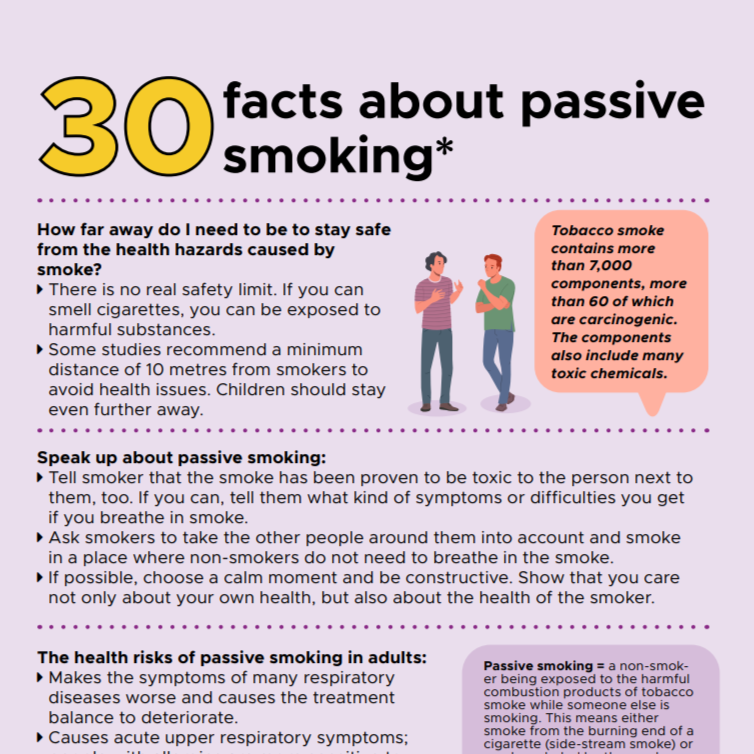Passive smoking is also called secondhand smoke exposure or exposure to environmental tobacco smoke. It has two components: the smoke emitted by the lighted end of the cigarette, also called sidestream smoke, and the smoke exhaled by the smoker.
Due to different combustion conditions, the concentration of various harmful substances is higher in sidestream smoke than in the mainstream smoke inhaled and exhaled by the smoker. In poorly ventilated areas, the concentration of harmful substances in the air can rise very high.
In Finland, smoking is restricted in workplaces, restaurants, public spaces, public transport, playgrounds, outdoor areas of daycare centres and educational institutions and on public beaches from the beginning of May until the end of September.
Occupational safety legislation requires that employers protect their employees from the cancer risk caused by environmental tobacco smoke.
Related content
Other topics that may interest you
Third-hand smoke
Third-hand smoke is the residue from tobacco smoke that remains on the smoker’s skin and hair as well as on surfaces, textiles and house dust. Even a thorough cleaning will not remove all residual tobacco smoke. Residue from tobacco smoke can be found on apartment and hotel room surfaces and dust for two months after the smoking stopped.
The residue from tobacco smoke consists of small amounts of chemicals that can increase the risk of cancer together with other gases in the environment. Children are particularly vulnerable to third-hand smoke if they crawl and play on the floor or put items in their mouth.
Effects on pets
Pets can get respiratory and eye symptoms from cigarette smoke. Exposure to tobacco smoke also increases the risk of cell damage and cancerous tumours in pets.
- The risk of lung cancer increases in snub-nosed dogs.
- The risk of nasal cancer increases in long-nosed dogs.
- Five years of exposure triples the risk of lymphoma in cats.

30 facts about passive smoking
Tobacco smoke contains more than 7,000 components, more
than 60 of which are carcinogenic.